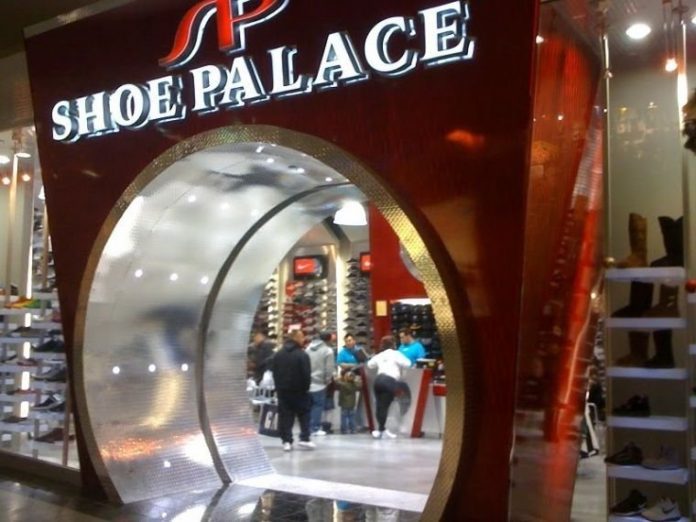Industrial and related development in Morgan Hill has surged recently, jumping from a flat line during the Great Recession to the sale or lease of about 494,000 square feet of previously vacant space in the last six months, according to City staff.
That’s about 9 percent of the City’s total inventory of 5.6 million square feet of properties – occupied and vacant – currently designated for industrial uses. The last time the City saw even nearly as much growth was in late 2011, when about 250,000 square feet of vacant industrial buildings and properties moved to new owners or tenants, according to Morgan Hill Principal Planner Edith Ramirez.
The recent growth means more jobs for area residents, according to Ramirez and some of the companies slated to set up shop in Morgan Hill for the first time. It also means up to twice as much revenue for the City’s general fund as residential developments, according to a fiscal impact analysis of industrial land uses commissioned by the City in September 2012.
“Things went kind of flat” after 2011, Ramirez said. “There was some movement but it was a zero net gain (in 2012). It’s exciting to see the new investment, and it’s a sign of the economy that is recovering. This is good, to see (about) half a million square feet of space occupied that is going to take a pretty good chunk of our available inventory off the market.”
Ramirez did not know how much vacant industrial space is left in Morgan Hill.
While one new commercial resident is going to take up nearly half the space occupied since January, other new industrial tenants and property owners represent a variety of uses including research and development, communications and office uses. Some of the companies coming to the vacant properties have carved out what appear to be a couple niche markets – food production and solar power providers – that are well-suited to Morgan Hill and the Bay Area.
Shoe Palace, a footwear retail store with more than 50 locations throughout California and the Southwest, recently closed on its purchase of the 250,000-square-foot “Hospira” building on Jarvis Drive. That’s one of the largest commercial buildings in Morgan Hill and has sat vacant since 2011 when Hospira, a pharmaceutical manufacturer, left the site.
Shoe Palace plans to move its corporate headquarters to the Morgan Hill building from San Jose in about three months, according to Shoe Palace CEO George Mersho. The company also plans to use the building as a warehouse, packaging and distribution center, and eventually expand its operations there to online sales.
The company will initially bring with it 75 job openings at the Morgan Hill office, increasing that up to about 225 in the next two years, according to a City staff report presented to the Planning Commission in February, when the company applied for a permit.
In order to accommodate more food production companies in Morgan Hill, the City Council last month approved amendments to the City’s industrial zoning code that will allow such uses on a regular basis. Companies getting ready to move to industrial properties in Morgan Hill are Ozuna Food Products, which produces tortilla chips and recently purchased a 35,000-square-foot building on Cochrane Circle; Baba Joon’s Chocolate Chewies; and the Bark’n Deli “gourmet” doggie treats company, according to Ramirez.
Existing food production operations already established in Morgan Hill are Del Monaco Specialty Foods and Lusamerica Fish.
City staff have also identified several other vacant sites in industrial parks near Tennant Avenue and along Cochrane Road that would be suitable for food production warehouses.
There are also two new solar power providers moving or planning to move to the area, too, including one in San Martin.
SolarCity recently signed a 63-month lease for a building on Adams Court in Morgan Hill in order to serve the growing demand for the nationwide company’s services, according to SolarCity spokeswoman Khyati Shah. SolarCity is a “full-service provider” of solar power, offering design, installation and maintenance of solar power systems, using panels from “the top manufacturers.”
When it’s fully up and running in about a month, the local SolarCity offices will bring up to 40 jobs to Morgan Hill, Shah said. SolarCity currently has two California locations – in Foster City and Berkeley – and the Morgan Hill location will serve an overflowing demand.
“These will be new local jobs. Both our facilities (in California) are tapped out. This will be adding a new location and new crew members,” Shah said.
Also opening a new local location recently is Colorado-based Syndicated Solar, which has its first permanent California location in San Martin.
Syndicated Solar already employs about six full-time local staff, but a bigger impact is in the company’s hiring of local electrical contractors to whom they will outsource installation, CEO Justin Pentelute said.
Another lesser-known economic benefit of solar power, Pentelute added, is the fact that solar power systems are “an alternative to the utility company” – in this case, PG&E for most of Syndicated’s customers.
“We’re able to save every customer a substantial amount of money. It’s literally zero cost out of pocket. We give them immediate savings, which results in additional expendable capital for the community, and we’re able to lock (our) rates in,” while utility companies’ rates appear to be always increasing, Pentelute said.
Industrial land uses also provide significantly more revenue to the City’s general fund than other uses – specifically more than residential, according to a fiscal impact analysis conducted by Strategic Economics in September 2012. The City commissioned that study to hypothesize the impact of converting two specific properties in north Morgan Hill from industrial to residential.
The two undeveloped properties – one on Jarvis Drive and one on Central Avenue – total about 27 acres, and the study concluded that when built out for industrial uses, they would generate about $87,000 annually to the City’s general fund. If developed as residential, the properties would generate about $43,000 annually for the City.
There are currently about 284 acres of vacant industrial land in Morgan Hill, according to the study. And as of 2010, there were 17,500 jobs in Morgan Hill – “heavily concentrated in the manufacturing and wholesale trade sectors.”
494,000: square footage of vacant industrial space purchased or leased in recent by companies setting up shop in Morgan Hill
5.6 million: total square feet, vacant and occupied, of industrial space in Morgan Hill
0: applications for new industrial construction from 2008 to September 2012
284: acres of undeveloped industrial property in Morgan Hill
Sources: City of Morgan Hill; Strategic Economics














